I had a little crush, recently. He was handsome and urbane, tall and well dressed. We talked late at night over a bottle of whisky. It felt out of control. It felt silly. I let myself be swept away by daydreams. And why not? Is there anything more uncomfortable and enlivening than the feeling of a new love?
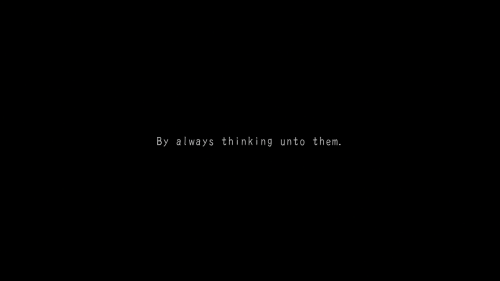
And so it’s a decidedly unromantic that Tamako Love Story opens with a scientific epitaph from Issac Newton. The full quote reads: “By always thinking unto them. I keep the subject constantly before me and wait till the first dawnings open little by little into the full light.”
It also opens with another discongruous idea: an image of the moon, rising in its orbit around earth.

Director Naoko Yamada describes Tamako Love Story as a “very very modest tale” of one girl falling in love. But Kyoto Animation – and more specifically, Yamada, as a director – specialize in the telling of modest tales. As such, Tamako Love Story is very, very good. You see, the epitaph and the moon mean something, as almost everything in the movie does. The moon represents our hidden feelings, and only by ruminating on them, as Sir Newton’s quote suggests, can we allow our feelings to bloom into fullness.
And boy has Mochizou been ruminating since Tamako Market ended.
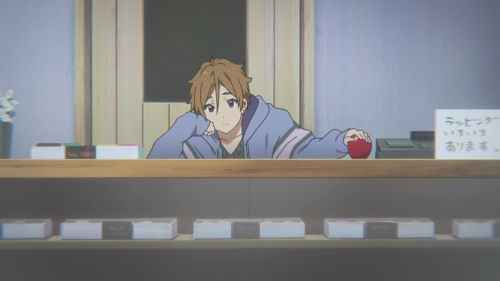
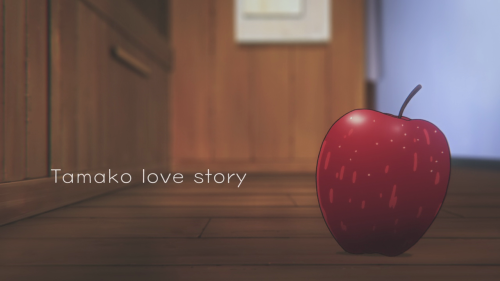
You really don’t have to watch its parent series, Tamako Market, to enjoy Tamako Love Story. In short: two childhood friends, Mochizou and Tamako are in their last year of high school and at a crossroads. Mochizou is in love with Tamako. He’s also thinking of going to Tokyo to university. She’s staying to help her parents’ mochi making business. Before he leaves, Mochizou resolves to tell Tamako how he feels.
For all that Tamako Love Story is, as the title suggests, a love story, it’s about one of anime (and cinema’s) favorite topics: the moment when a child becomes an adult. What prompts the movie’s central conflict of will-they-or-won’t-they is their impending entry into the adult world. It’s not just Tamako and Mochizou’s relationship changing: it’s Tamako’s relationship with everyone she knows, a thread that runs through the movie, parallel to the main plot.
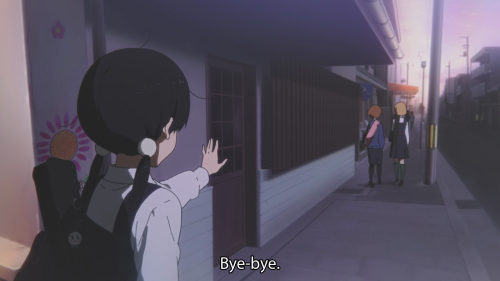
The strangest thing about Tamako Love Story is that it’s riveting in a way that (frankly) Tamako Market just isn’t. Like most slice of life anime, Tamako Market borders on the tedious. It relies on a Maru-esque sort of appeal: being so mind numbingly boring it becomes inherently relaxing. Just the kind of thing a tired adult wants at the end of a stressful day. By contrast, Tamako Love Story isn’t modest at all: it’s emotionally charged, and demands attention from its viewers.
Tamako Market is about Tamako and her relationship to the rest of the shopping arcade, her home. It’s field of vision, while sweetly focused on Tamako, is utterly myopic. The narrow focus of the series reflects Tamako’s relative obliviousness to the feelings of others. It’s what makes Mochizou’s painfully obvious crush in the series so endearing to watch.
Tamako Love Story, however, focuses on the evolving relationship between the two. It presents the viewer with a layers of visual metaphor, careful cutting and camerawork, and excellent use location and lighting to enhance meaning. Take, for example, an image we’re shown often: Tamako and Mochizou talking using their cup-and-string phone.
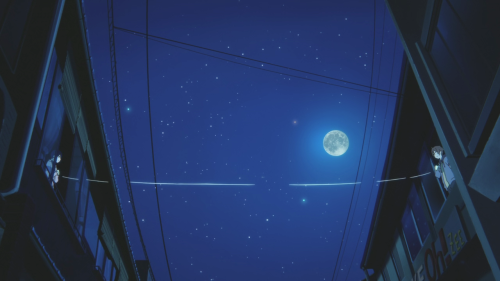
As Mochi puts it to Tamako’s younger sister, “that cup phone connects our hearts.” It symbolizes their emotional connection, but they always throw it back and forth at night, when they’re alone: their emotional connection is strong, but hidden and undefined.
Mochizou’s confession comes at sunset:
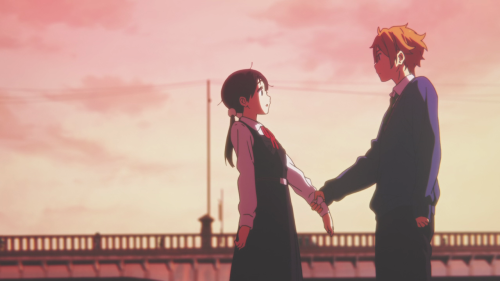
Tamako comes to terms with her feelings, deciding to respond to Mochizou during a walk at dawn:
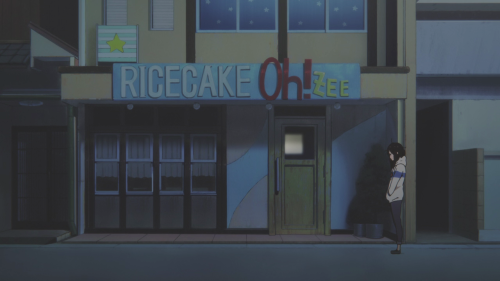
.. And she makes her confession in the light of day, throwing the cup phone at Mochizou at the train station.
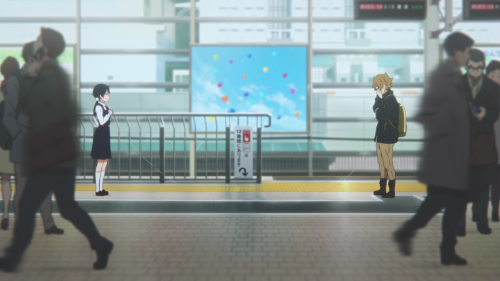 The Japanese concept of of honne and tatemae comes into play, here: Tamako needs to connect what she feels inside (night) to how she relates to Mochizou on a surface (day) level.
The Japanese concept of of honne and tatemae comes into play, here: Tamako needs to connect what she feels inside (night) to how she relates to Mochizou on a surface (day) level.
Another example are the residents of the shopping arcade themselves. Before Mochizou’s confession, Tamako interacts with them all individually, never considering their relationships with others. This isn’t to say Tamako is self-centered; just naive. She’s never shared herself willingly with anyone else, and so she never notices the connections people have with others.
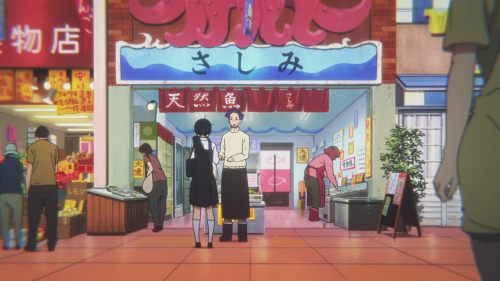
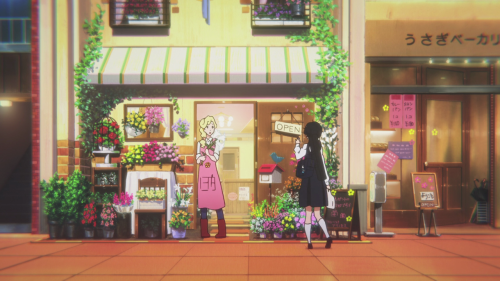
As soon as Mochizou confesses, however, the scales fall from her eyes. Suddenly, everywhere she looks, she sees nothing but couples.
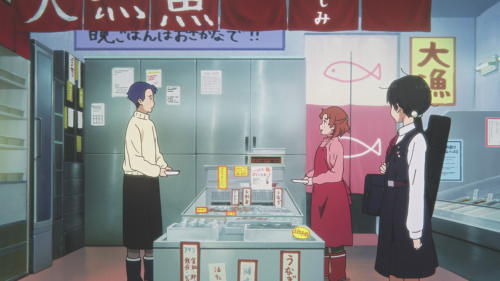
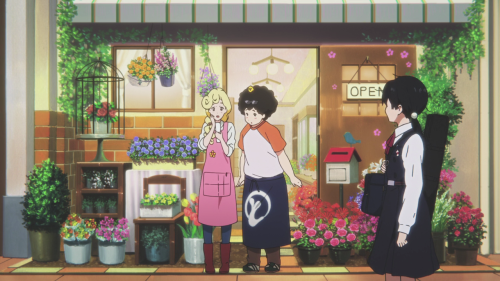
Where Tamako Market is myopic in scope, Tamako Love Story is telescopic: it moves from Tamako in relation to the market, to Tamako in relation to other people, and finally, to Tamako in relation to Mochizou.
Speaking of which, perhaps one of Tamako Love Story‘s most interesting visual moments is the credit roll, for that very reason. Tamako and Mochizou have resolved their relationship: they like each other, and are going to endeavour to be together. And what follows. Well.
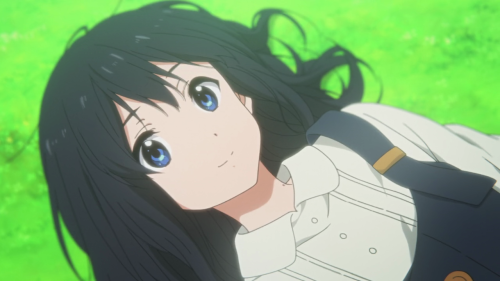
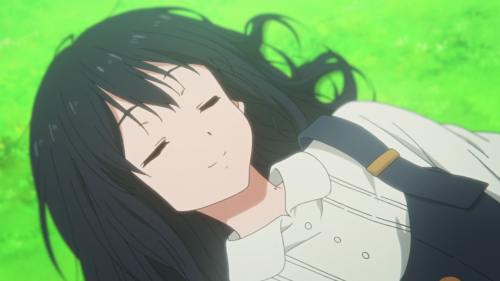
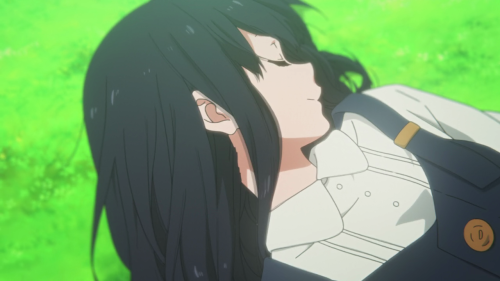
There’s something very viscaral happening in this ending sequence. It’s presented to the audience as videos Mochizou has shot. But interspersed with cuts of the film project we’ve seen Mochizou working on with the film club during the movie, we’re shown startlingly intimate images of Tamako herself.
For all of Kyoto Animation’s pandering to their audience, they rarely cross the boundary into outright eroticism. In case you aren’t picking up on what’s happening above: Tamako holds eye contact with the camera (presumably held by Mochizou) She then closes her eyes and turns her head and offers her neck in submission. The shot is taken directly above her; positioning indicating closeness and an invitation into her personal space.
Yamada repeats this again for emphasis in the next cut of Tamako. The apple, visually associated with Mochizou from the movie’s title card, travels its way up Tamako’s side. It ruffles her skirts; pushes into her cheeks. It travels up her body possessively.
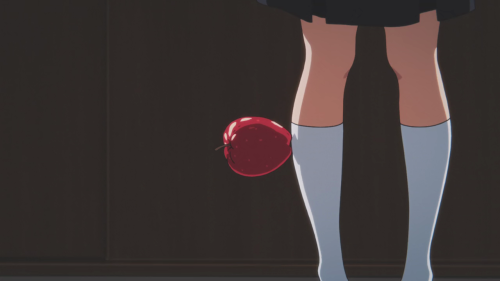
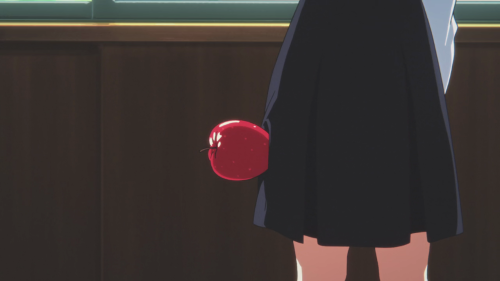
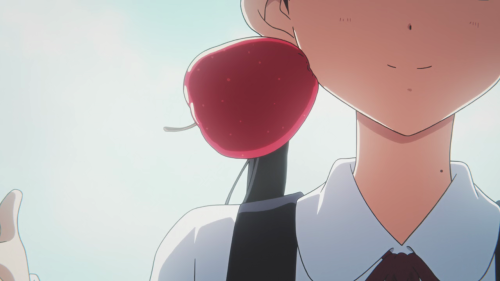
Naoko Yamada said she wanted Tamako Love Story to portray love at 17, and here, she tells us what we all know: that love at 17 is as innocent as it is trailblazing. Emotion blossoms into physical desire, and a gaze becomes a touches that get more and more adventurous. Tamako Love Story is about that first, tentative foray into the mystery of another, and Yamada takes the time to show us that, like all teenagers, that exploration occurs on all fronts. The end of Tamako Love Story is a promise, a hint: the real love story has only just begun.
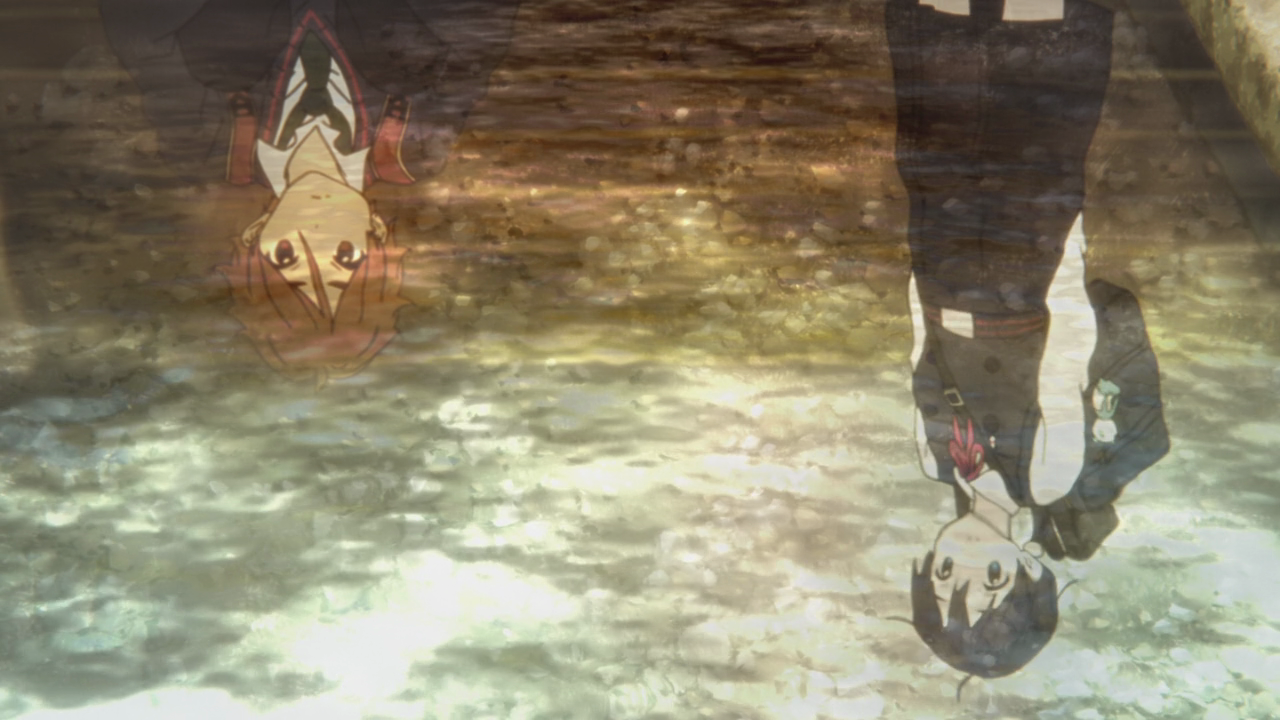
5 replies on “The unbearable lightness of Tamako Love Story”
Tremendous essay about a great movie and a truly talented director. Thanks!
Amazing and Thanks! If you have anymore insight into the film, I would love to read more.
yeah, to be honest it was really light but I really enjoyed watching Tamako Love Story and how simple the story was. It simply gives off that relaxing atmosphere as if you’re watching someone’s daily life in slow-mo phase.
Sometimes a flat tyre can be a good thing! See what happens when Samar’s car breaks down and Ritika passes by in this short love story! #IshqQuickie
Ishq Kabeer Ishq Meha
This is a great review. I really enjoyed reading it. You have very sharp insight and you are interpreting the movie at the right level of depth!